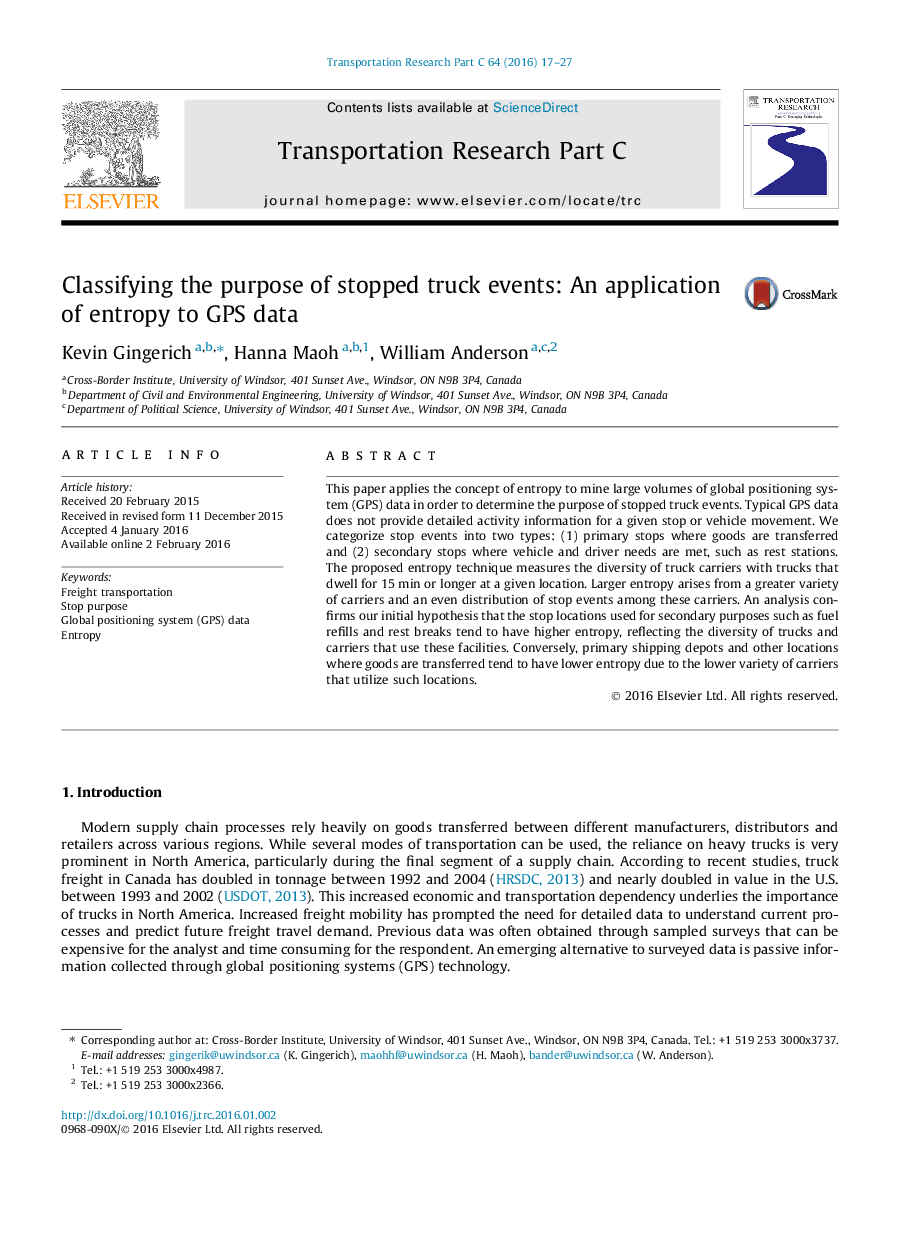| کد مقاله | کد نشریه | سال انتشار | مقاله انگلیسی | نسخه تمام متن |
|---|---|---|---|---|
| 526269 | 869086 | 2016 | 11 صفحه PDF | دانلود رایگان |
• A novel application of entropy is proposed to analyze stop events in truck GPS data.
• The method helps identify secondary stop events among all stops in a dataset.
• A low variety of carriers at a location suggests a transfer of goods (primary).
• A high variety of carriers suggests a driver break or fuel refill (secondary).
• The validations establish a strong relationship between entropy and stop purpose.
This paper applies the concept of entropy to mine large volumes of global positioning system (GPS) data in order to determine the purpose of stopped truck events. Typical GPS data does not provide detailed activity information for a given stop or vehicle movement. We categorize stop events into two types: (1) primary stops where goods are transferred and (2) secondary stops where vehicle and driver needs are met, such as rest stations. The proposed entropy technique measures the diversity of truck carriers with trucks that dwell for 15 min or longer at a given location. Larger entropy arises from a greater variety of carriers and an even distribution of stop events among these carriers. An analysis confirms our initial hypothesis that the stop locations used for secondary purposes such as fuel refills and rest breaks tend to have higher entropy, reflecting the diversity of trucks and carriers that use these facilities. Conversely, primary shipping depots and other locations where goods are transferred tend to have lower entropy due to the lower variety of carriers that utilize such locations.
Journal: Transportation Research Part C: Emerging Technologies - Volume 64, March 2016, Pages 17–27
